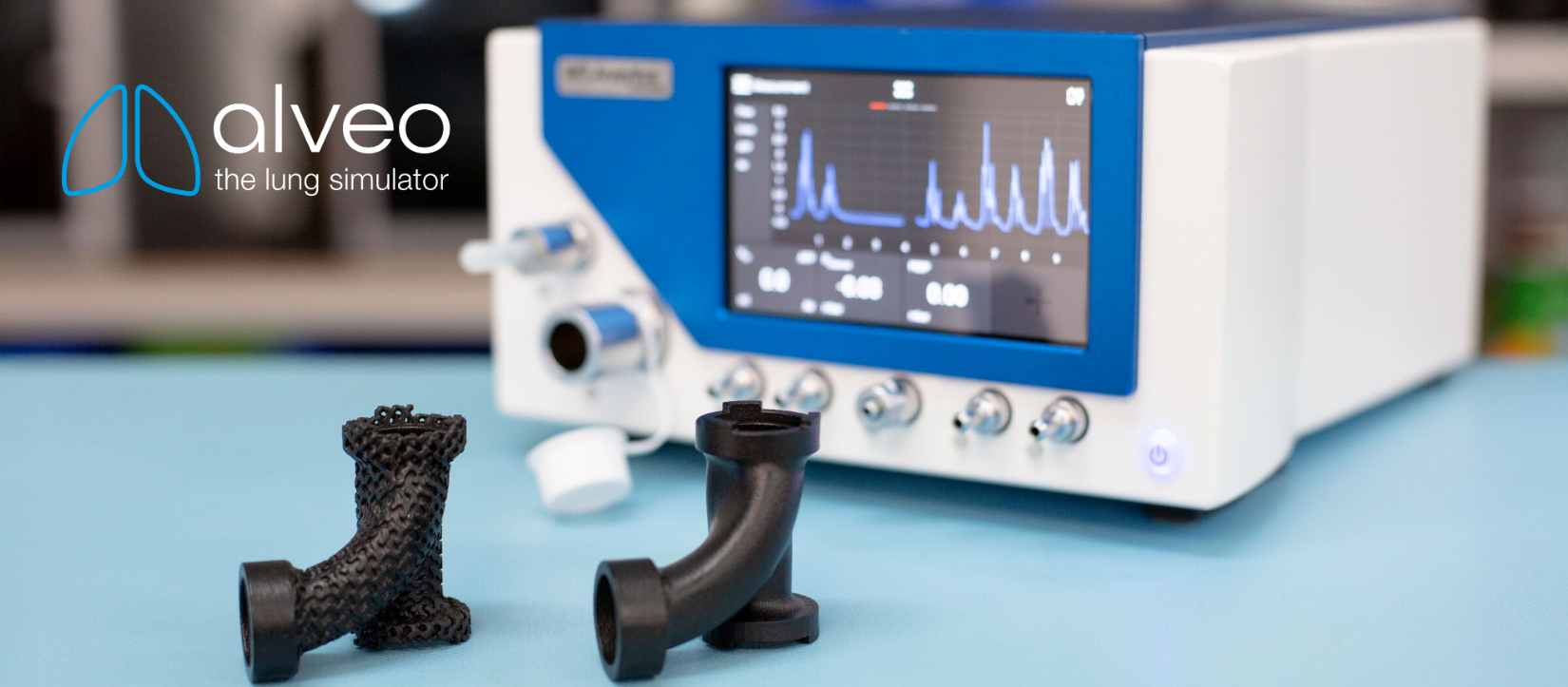Shopping cart
You have no items in your shopping cart.
Alveo blog

IMT optimized a blower coupler for alveo, emphasizing minimal pressure loss, material efficiency, and flow-optimized geometry. Using generative design and additive manufacturing, differential pressure was reduced by 13%, using less material.

Figure 1: alveo blower assembly with blower coupler
Developing complex mechanical components requires innovative methods to improve efficiency and performance. IMT utilized generative design to optimize the blower coupler for alveo, aiming to reduce differential pressure and internal volume while minimizing material usage. All design variations were additively manufactured and tested to validate the best solution, achieving a 13% reduction in differential pressure compared to the original design. This success underscored that the full potential of generative design is only realized through additive manufacturing, which enables flow-optimized structures.
Modern medical technology devices are experiencing growing demands for enhanced performance and resource efficiency. IMT was assigned to develop a blower coupler for a lung simulator designed for its subsidiary, IMT Analytics. The objective was to minimize pressure loss and internal volume while using materials effectively. This was accomplished through traditional engineering practices and using tools like Autodesk Fusion 360, a computer-aided design (CAD) software, and Ansys FLUENT, a computational fluid dynamics (CFD) software.
Generative design employs algorithms and artificial intelligence to create optimized component geometries. Engineers define the conditions, such as fluidic requirements and material constraints, while the software generates multiple potential solutions inspired by natural structures. The best geometry is determined through iterative simulations. This method is particularly effective with additive manufacturing, which can produce complex shapes that traditional manufacturing cannot.

Figure 2: Blower coupler iterations
An experienced engineer first modeled a conventional geometry for the blower coupler. This was simulated and tested with FLUENT. The first version was then additively manufactured and precisely measured to obtain accurate data to validate the simulation.
The same task was passed to a generative design algorithm in Fusion 360. The generated mold was also simulated, then additively manufactured and measured. The test results showed that this variant performed worse than the manually developed model due to unsuitable input parameters, such as incorrect fluidic requirements and material constraints.

Figure 3: Coupler variants produced by generative design
Correcting the parameters improved the results. Additionally, lattice structures were implemented to optimize material usage further. These lattice structures significantly reduce weight and material while preserving structural integrity. Such designs were particularly beneficial in components optimized for flow, promoting an even airflow distribution.

Figure 4: Reduction of material using lattice structure
The final iteration featured an engineered shape optimized through mesh morphing in FLUENT.
This version was additively manufactured and measured, resulting in a 13% reduction in differential pressure while using less material, maintaining the same volume, modifying wall thicknesses, and introducing a lattice structure to enhance performance further. This optimized shape could only be achieved through additive manufacturing, as conventional methods cannot create such complex, flow-optimized structures
The final iteration combined the engineering-driven shape with additional optimizations using mesh morphing in FLUENT. This process involved refining the geometry based on the results of the initial simulations, leading to a more efficient and effective design.

Figure 5: Final Design
Generative design is undeniably effective in optimizing shapes but does not replace engineers' critical expertise. The most substantial solutions arise from a decisive combination of classical engineering principles, advanced simulation techniques, and generative design. In the final phases of our projects, we have confidently employed additive manufacturing and precise measurements to validate our results, achieving a remarkable 13% reduction in differential pressure.
Moreover, the full advantages of generative design are realized exclusively through additive manufacturing, enabling superior flow-optimized geometries. At IMT, we are committed to leveraging generative design to develop innovative solutions that meet and exceed our clients' complex challenges.